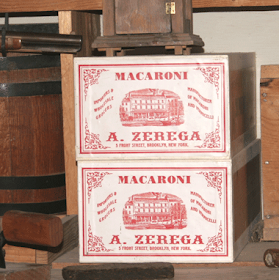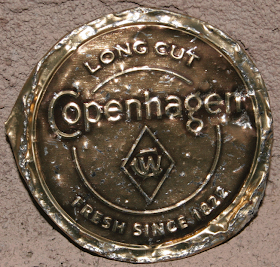 If there is one unifying theme in New Mexico, besides the breathtaking landscapes, it's the peppers. Thousands of acres are devoted to pepper growing. And to celebrate that, the New Mexico State Fair hosted the first ever, World Championship Burrito Eating Contest. Fifteen contestants competed for the grand prize of $3,000. There were no "reversals of fortunes" (what they politely call it when you gag and upchuck), but doing so would disqualify the contestant. The burritos, which were prepared by the sponsor, a local restaurant, were 1/4 pound burritos
If there is one unifying theme in New Mexico, besides the breathtaking landscapes, it's the peppers. Thousands of acres are devoted to pepper growing. And to celebrate that, the New Mexico State Fair hosted the first ever, World Championship Burrito Eating Contest. Fifteen contestants competed for the grand prize of $3,000. There were no "reversals of fortunes" (what they politely call it when you gag and upchuck), but doing so would disqualify the contestant. The burritos, which were prepared by the sponsor, a local restaurant, were 1/4 pound burritos  and you won or lost by the number eaten in a 10 minute period. There was a large crowd, an impressive production with lots of lights, music and fanfare. The third prize winner was from Wisconsin, but the winner of the $3,000 was a local guy, who ate 32 1/2 burritos!
and you won or lost by the number eaten in a 10 minute period. There was a large crowd, an impressive production with lots of lights, music and fanfare. The third prize winner was from Wisconsin, but the winner of the $3,000 was a local guy, who ate 32 1/2 burritos!I was running short of time when I left Bent's Old Fort and had to miss driving through Rocky Ford, Colorado, home to the famous Rocky Ford melons. I would have actually made it had my normally trustworthy Garmin n avigator not led me wrong. She kept giving me wrong directions. A trip that amounted to 14 miles off the main road, to get to Rocky Ford, turned into a 38 mile trip in the wrong direction. I turned off
avigator not led me wrong. She kept giving me wrong directions. A trip that amounted to 14 miles off the main road, to get to Rocky Ford, turned into a 38 mile trip in the wrong direction. I turned off
 avigator not led me wrong. She kept giving me wrong directions. A trip that amounted to 14 miles off the main road, to get to Rocky Ford, turned into a 38 mile trip in the wrong direction. I turned off
avigator not led me wrong. She kept giving me wrong directions. A trip that amounted to 14 miles off the main road, to get to Rocky Ford, turned into a 38 mile trip in the wrong direction. I turned off
Ms. Garmin after a giving her a sharp tongue lashing and threatened her with going back into the box unless she did better on the rest of the trip.
I admit I was tempted to steal some melons along the way. Fields, some of them 80 or 100 acres, had melons laying everywhere, rotting. The melon harvest season has passed, produce companies are wanting squash and pumpkins now, not melons. And there were lots laying in the fields, going to waste. I did stop at a little roadside stand and buy 3 not great Rocky Fords that nearly spoiled before I got home but at least we had a taste of that rightly famous melon. Last time I went through that area 10 years or so back, I took great delight in eating Rocky Fords, in Rocky Ford, CO.

One of the things I looked
forward to along the Santa Fe Trail, was the roadside pepper roasters. The roaster, seen here, is typical. It's a wire cage with propane pipes underneath. Hank Hill, (from King of the Hill) would certainly approve, since he's the promoter of "propane and propane accessories".
You could bring your own peppers to the roasters and have them roasted, or buy them from the roasters in little baggies. The big advantage of these roasters over roasting them yourself on the grill, is, a guy stands there slowly turning the wire cage and as the peppers roast, the peelings fall off through the wire into a catcher below. So what you are buying are bags of roasted peppers, with the hard work of peeling the skins, already done.

I also found this booth at in the Santa Fe Farmer's market, selling some pepper varieties I'd wasn't familiar with (Padrone and Shishito). The seller was demonstrating how to cook them, and handing out samples. One taste and I was hooked. I bought a bag of both varieties. The cooking consisted of a hot skillet with about a teaspoon of olive oil. A good handful of peppers were dropped into the hot skillet, tossed around for about 60 seconds so they began to burn on one or two sides, then they were dumped out onto a plate and dusted with coarse sea salt. Because the peppers are quite young and not mature, the seeds are tiny and there is almost no heat. What you get is a slightly charred, smoking tasting pepper that is still crisp. They are addictive whether you like heat, or not!
The roadside flowers this time of year are primarily yellow and purple. Rabbitbrush is in full bloom with waist high bushes of bright yellow. I'm not sure whether the name comes from the fact there's a rabbit under every bush, or from the berries, which look a lot like rabbit droppings when they fall to the ground.

I found this interesting white blossomed plant along the highway but have no idea what it is. Anyone recognize it? If so, leave a comment. I collected some seed. It grows in dry roadside settings, takes winter freezes and appears to be an annual. The flowers are substantial, even though they look somewhat fragile. I'm going to freeze the seed, then plant them in a marked area in the garden to see if I can get them to grow next year.



























